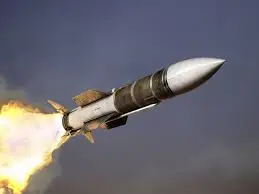The rocket science behind missiles: Newton’s laws, neural networks and algos

Newton’s Laws: The Foundation of Missile Flight
To begin with, missile technology is deeply rooted in the principles laid out by Sir Isaac Newton over three centuries ago. His three laws of motion remain essential to understanding how missiles launch, navigate, and strike their targets.
- Newton’s First Law (Inertia): This law states that an object in motion stays in motion unless acted upon by an external force. In the context of missiles, it explains how they maintain a steady trajectory after launch unless they are guided or deflected.
- Newton’s Second Law (Force and Acceleration): Expressed as F = ma (force equals mass times acceleration), this principle explains how the force generated by rocket engines leads to acceleration. By adjusting thrust, missiles can increase or decrease speed as needed.
- Newton’s Third Law (Action and Reaction): According to this law, for every action, there is an equal and opposite reaction. Thus, when a missile’s engines push exhaust gases backward, the missile itself is propelled forward with equal force.
Consequently, a firm grasp of these principles allows engineers to design rockets that are not only efficient and powerful but also stable and responsive throughout flight.
Neural Networks: Intelligence in the Sky
While Newton’s laws govern motion, modern missiles also require intelligence to operate effectively in complex environments. This is where neural networks, a subset of artificial intelligence (AI), come into play.
- Target Recognition and Tracking: For example, onboard sensors collect vast amounts of real-time data. Neural networks process this information to distinguish targets from decoys, noise, or terrain—ensuring missiles lock onto the correct object.
- Adaptive Flight Control: Furthermore, neural networks allow missiles to adjust mid-flight. If weather conditions shift or an obstacle appears, the AI can recalculate and change the course in milliseconds.
- Predictive Modeling: In addition, AI can predict the future position of moving targets using historical and real-time data. This capability is essential when engaging fast-moving or evasive threats.
As a result, neural networks transform traditional “fire-and-forget” missiles into adaptive, intelligent weapons capable of learning and responding on the go.
Algorithms: Precision Behind the Scenes
While neural networks make missiles smarter, it is algorithms that translate intelligence into action. These mathematical procedures direct every stage of the missile’s journey, from launch to impact.
- Guidance Algorithms: These continuously calculate the optimal path to the target, adjusting for distance, speed, altitude, and environmental factors. For instance, proportional navigation uses real-time updates to keep the missile aligned with its target.
- Control Algorithms: Simultaneously, these algorithms maintain stability during flight by managing aspects like angle, speed, and thrust vectoring.
- Optimization Algorithms: Moreover, these ensure efficient fuel use, maximum range, and minimal response time by solving complex trajectory and timing equations.
- Encryption and Security: Additionally, algorithms protect communication links between missiles and command centers, safeguarding against jamming and cyberattacks.
Altogether, these algorithms are the invisible hands steering missiles toward their targets with pinpoint accuracy.
The Synergy of Physics and AI
Taken together, Newtonian physics, neural networks, and algorithms demonstrate a remarkable synergy. While physics enables the missile to move and maneuver, artificial intelligence and algorithms give it the power to decide, adapt, and respond in real time.
In practice, this fusion involves:
- Mechanical Engineering, for propulsion systems and aerodynamics.
- Computer Science, for AI, data handling, and control logic.
- Mathematics, for modeling trajectories and optimizing performance.
- Electronics, for sensors, communication, and control mechanisms.
Therefore, modern missiles represent a perfect blend of hard science and digital intelligence, turning them into formidable tools of modern warfare.
Challenges and Future Prospects
Nevertheless, even with such advancements, challenges persist.
- Countermeasures: Adversaries continuously develop tactics like electronic jamming and decoys. Consequently, missile systems must evolve to stay ahead using smarter AI and more robust algorithms.
- Ethical Concerns: Increasing autonomy in weapons also raises ethical questions. Who is responsible if an autonomous missile makes a mistake? Hence, oversight and strict regulations are more important than ever.
Looking forward, experts anticipate the integration of quantum computing for faster processing, swarm intelligence for coordinated attacks, and explainable AI to ensure transparency and accountability in autonomous decisions.
Conclusion
In conclusion, the science behind missiles is not merely about explosive power. Rather, it is a fascinating interplay of Newtonian mechanics, artificial intelligence, and advanced algorithms. Each component—physical laws, neural networks, and precise code—plays a vital role in transforming a simple rocket into an intelligent weapon of the 21st century.
As defense technology continues to evolve, so too will the algorithms and AI systems that drive these powerful machines. Ultimately, the rocket science behind missiles exemplifies how centuries-old physics and cutting-edge computing can come together to shape the future of warfare.






